This is a great activity with the kids or to just while away some time, especially during this lockdown when we’re struggling to get out and enjoy the outdoors.
If you ever need to attract anyone’s attention, a whistle can be a good alternative to shouting and, of course, a whistle has long been a basic part of a Bushcrafters safety kit.
Whistles are fairly easy to make and by playing about with the size and proportions of the various elements that make them up you can get tones ranging from a piercing dog whistle to owl hoots. But beware, whistle-making can be addictive.
Find a stick and make a hole
To make a simple woodland whistle you can use nearly any stick, I used a stick from the firewood pile, a Swiss Army knife and a drop of glue from my ever-handy “repair kit” pouch.
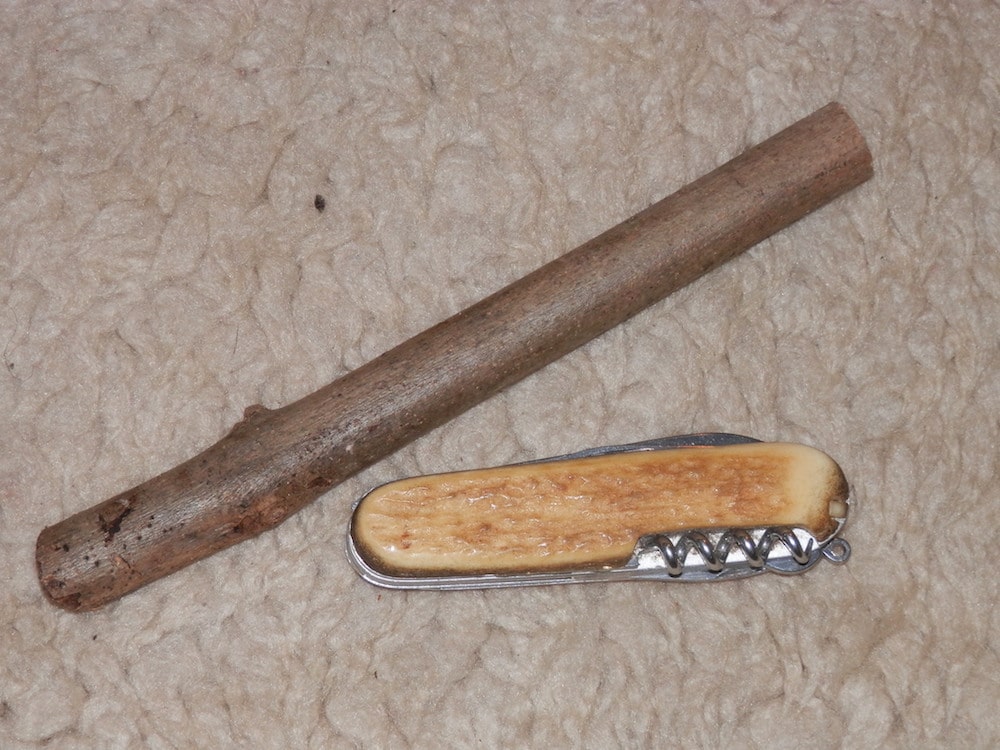
For this whistle, I chose a piece of well-seasoned Ash about 1.5cm diameter and with my Swiss Army Knife, I trimmed one end square using the saw blade. I then carefully bored out the centre of the wood with the knife’s awl to the full depth of the awl.
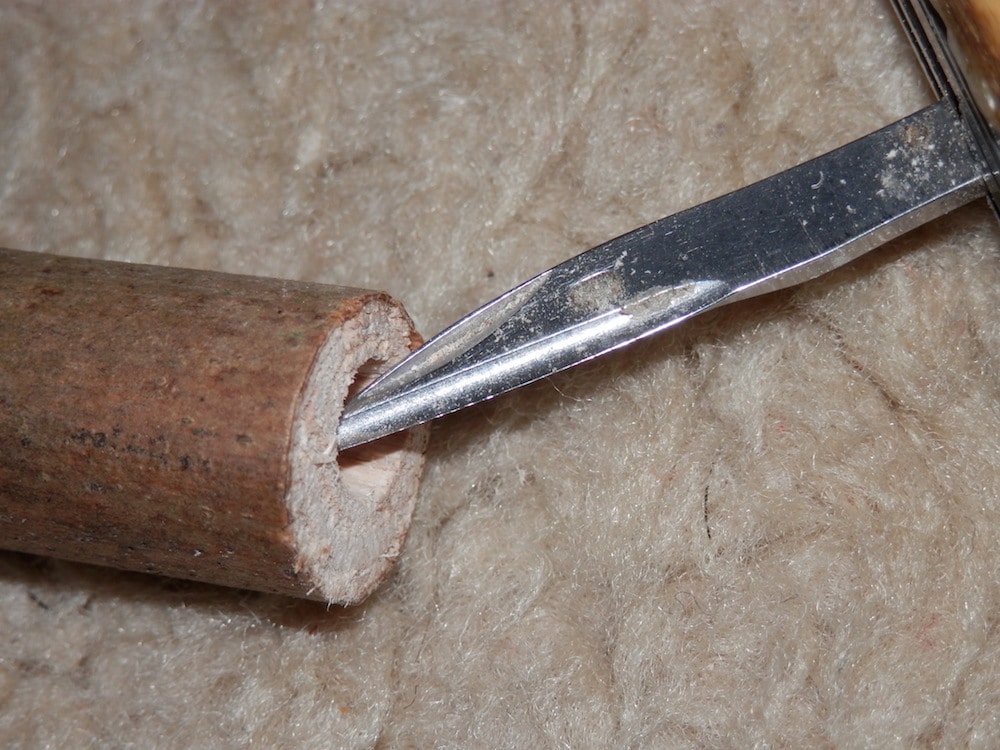
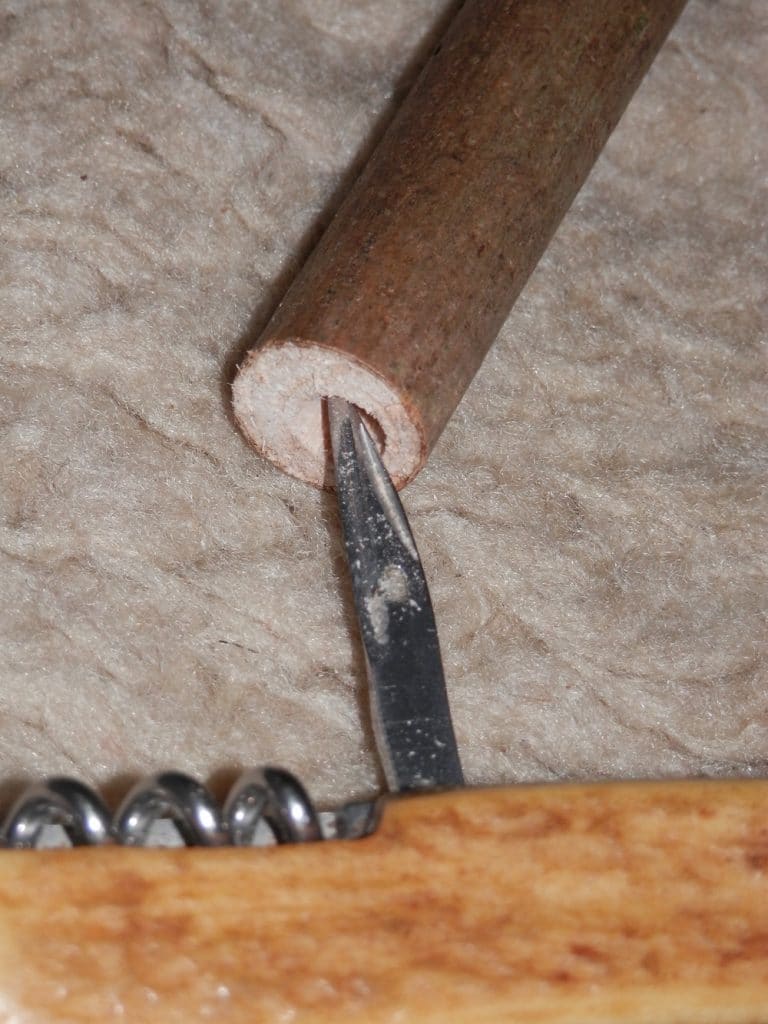
Cut a wedge
About 1.5cm from the end I sawed into the wood at a 90-degree angle until I just broke into the hollow bored by the awl. With the knife blade I then cut into the saw cut at a 45-degree angle to remove a wedge and give the whistle its distinctive shape.
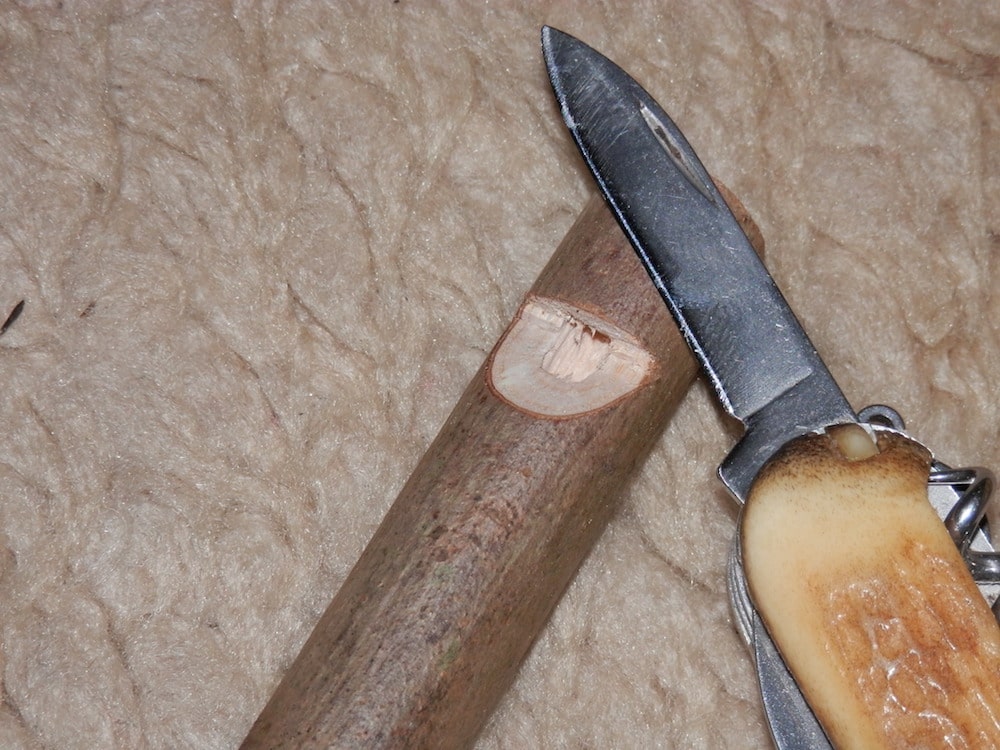
Make your Fipple
The next stage was to cut a length of dowel from a twig. This needs to be a tight fit in the bored-out centre and will form the “fipple”.
Cut one end square and then flatten the top between one-quarter and one-third the thickness of the fipple. Do not cut the fipple to length until you have fitted it and have achieved the sound you want.
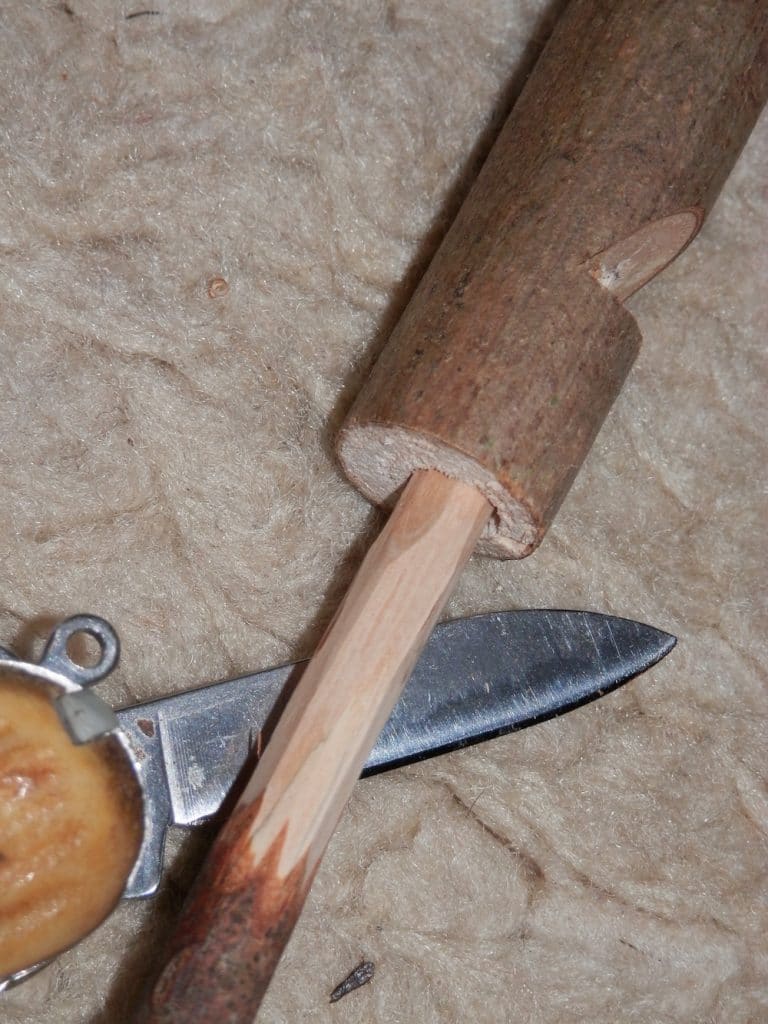
The square end of the fipple needs to be pushed into the bore of the whistle until it is about flush with the 90-degree cut of the wedge, and the flat top of the fipple needs to be about level with the edge of the 45-degree cut.
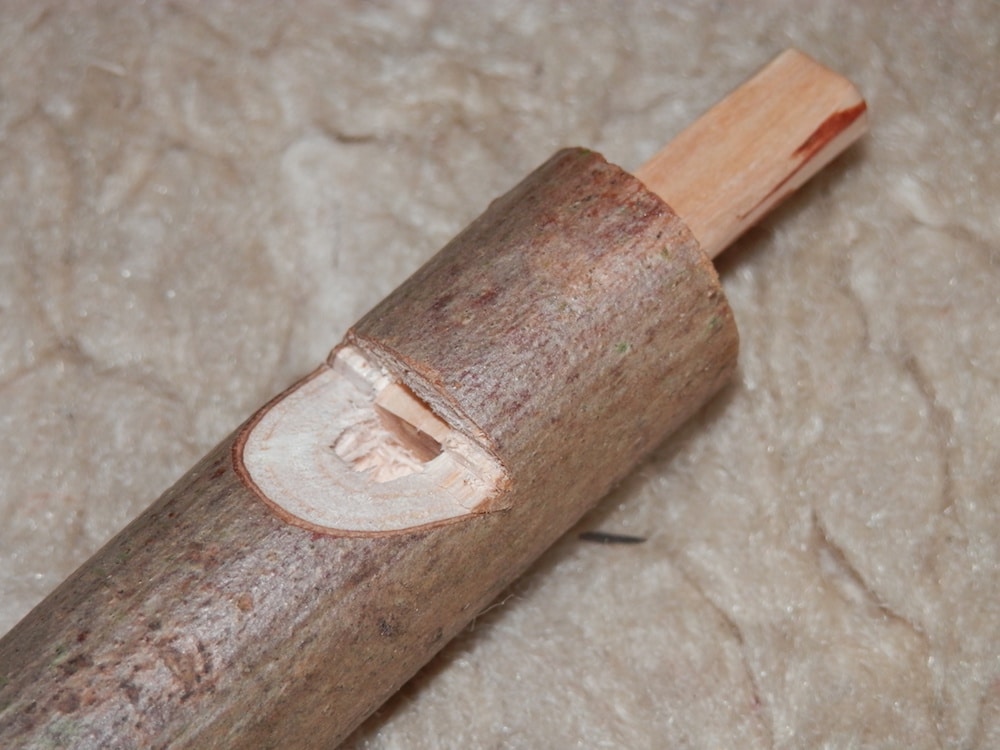
Glue the fipple
Once you have jiggled and adjusted the fipple to get the sound you want, glue it in place, using a glue that you will not mind being in your mouth!
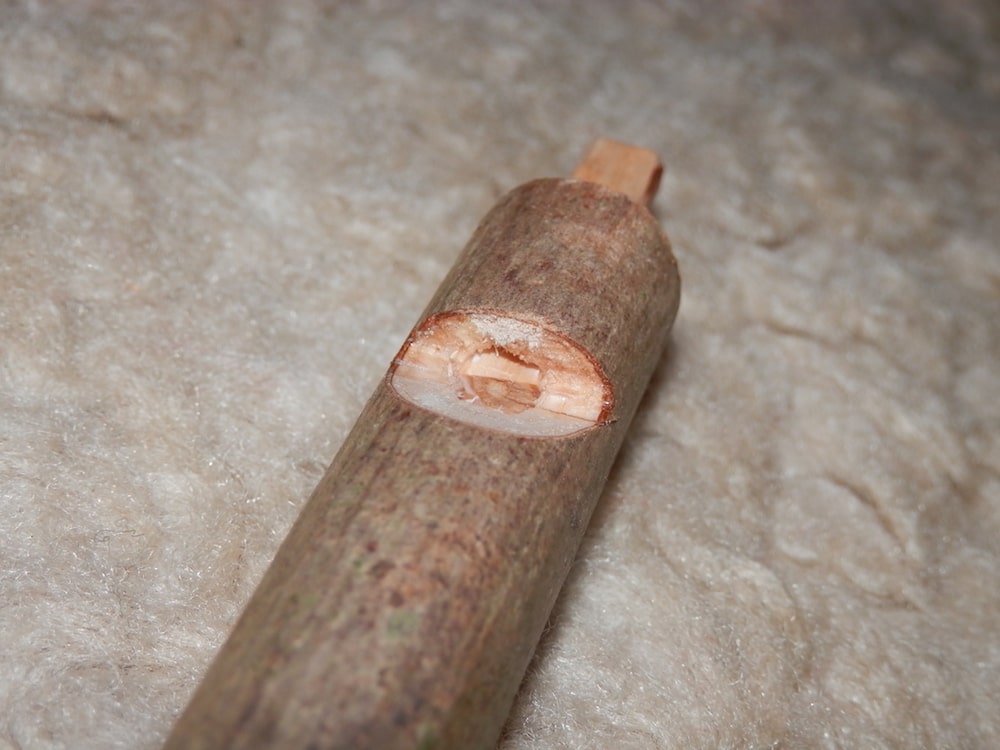
Tidy up
When the glue is totally dry, trim the fipple to length and shape the mouthpiece. Cut the whistle to length, decorate it as you see fit and your whistle is finished.
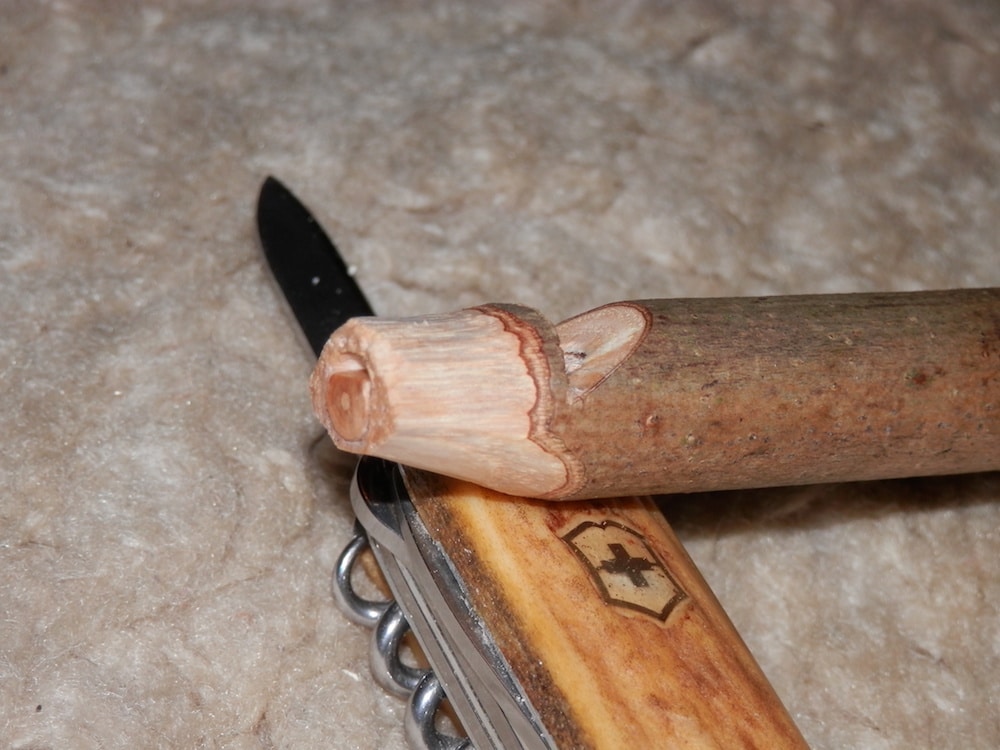
The whistle I have made here gives a piercing high-pitched note. It would appear that the bigger the size of the hole bored beyond the wedge you cut out, the deeper the tone of the whistle.
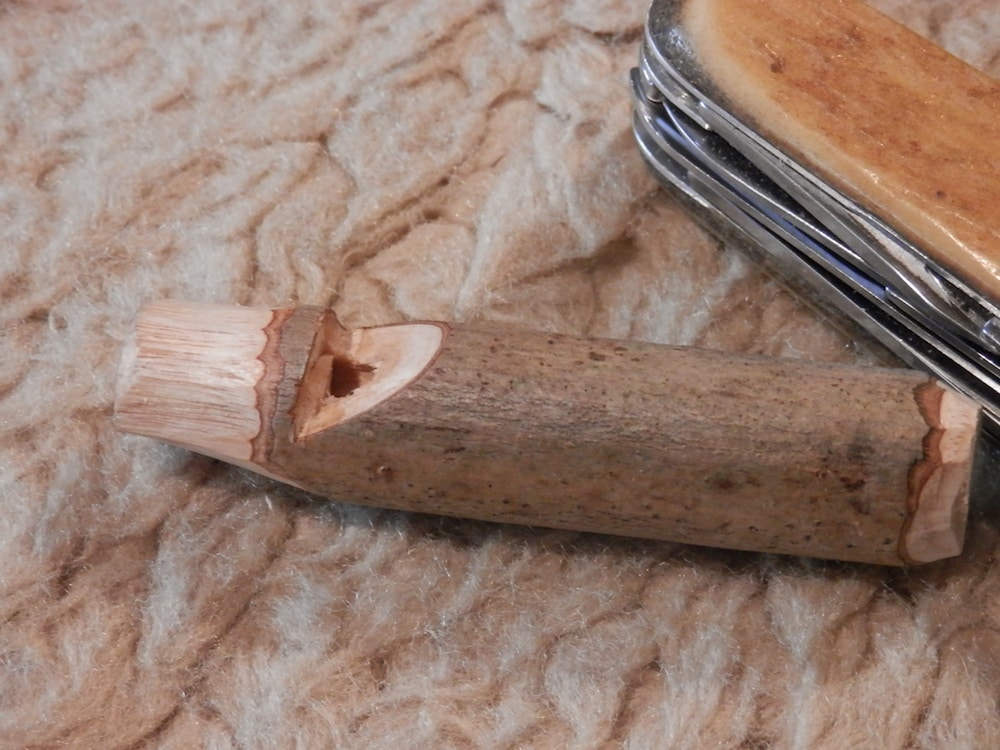
Have fun trying out different sizes of whistle for different tones.
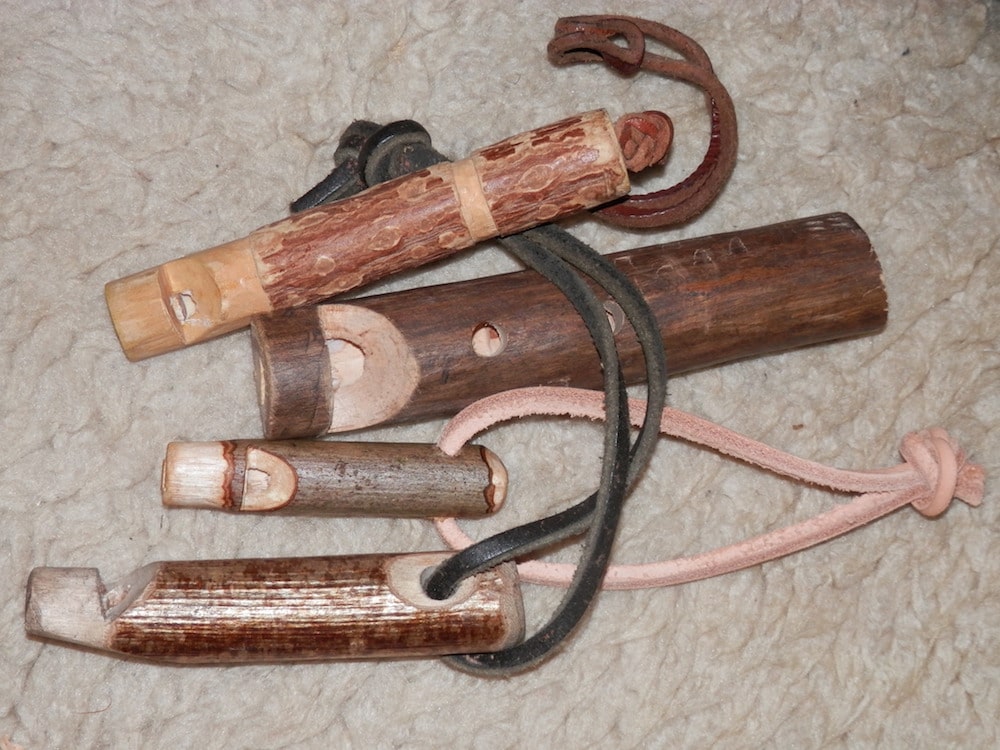
We’d love to see pics of whistles you’ve made!

John Fenna
Over the past 40 years John has instructed Outdoor Pursuits and led expeditions tofu flung places. He’s a published author and a self confessed ‘Gear Freak’
He also likes to wear pink at the BushMoot.

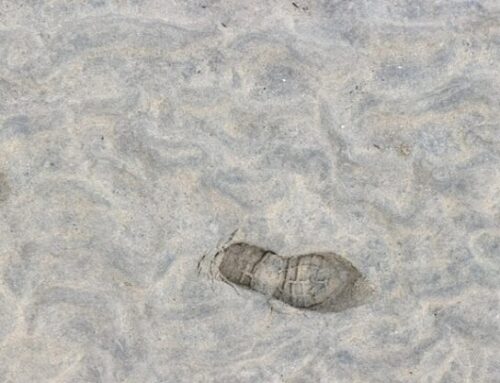

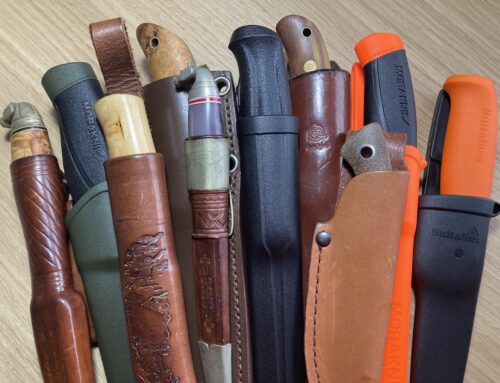

Leave A Comment
You must be logged in to post a comment.